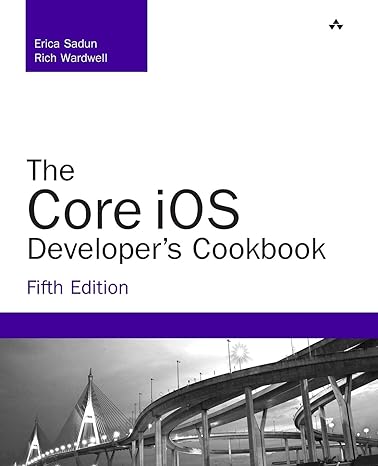Answered step by step
Verified Expert Solution
Question
1 Approved Answer
CS 4650/7650 ECE 4655/7655 Digital Image Processing Homework 4 Detection and Segmentation of Individual Structures of Interest [100 pts] Out: Th Oct 27 Fall 2022
CS 4650/7650 ECE 4655/7655 Digital Image Processing Homework 4 Detection and Segmentation of Individual Structures of Interest [100 pts] Out: Th Oct 27 Fall 2022 Due: Tu Nov 8 Detection and segmentation of individual objects or structures of interest is an important and challenging task for image analysis. Characterization of object properties (i.e., count, shape, color, texture, position, spatial layout) heavily rely on instance segmentation (segmentation of individual objects). The goals of this assignment are to understand: (i) Segmentation of overlapping/touching objects (ii) Counting individual objects (iii) Characterization of individual objects HW3 segmented foreground from background but failed to identify individual objects within a touching group. In this task you will use marker-controlled watershed method to segment overlapping/touching objects. You will use built-in Matlab or OpenCV functions for the following operations: - Distance transform (Matlab bwdist; OpenCV distanceTransform) - Watershed segmentation (Matlab and OpenCV watershed) - Connected component labeling (Matlab bwlabel; OpenCV connectedComponents) You can use the following references and example codes for reference: - Lecture slides (Lect14_WatershedSegmentation_longer.pdf) - OpenCV tutorial: https://docs.opencv.org/3.4/d2/dbd/tutorial_distance_transform.html - Matlab tutorial: https://www.mathworks.com/help/images/ref/watershed.html HW4 Tasks: 1. Use k-means clustering to generate binary foreground-background mask (HW3-Task3). 2. If necessary, apply post-processing. For example binary morphology to remove small spurious detections, to fill holes etc. 3. Identify internal and external markers for marker-controlled watershed segmentation. You can use one of the following approaches: a) use segmentation mask and distance transform of the mask to determine internal and external markers. b) use blob detection to determine internal markers (check scale-space Laplacian of Gaussian filter from HW3-Task2). 4. Apply marker-controlled watershed to segment individual objects. 5. Apply connected component labeling to assign unique object labels. 6. Compute individual object level characteristics: a) Area b) Mean color Test Image: malaria_cropped Required Outputs: For each of the test images listed above, show 1. Original image, 2. Output of K-means segmentation: This will be a multi-class output (HW3) 3. Foreground mask: Binary mask derived from K-means segmentation (i.e. darkest class or combination of two darkest classes etc.) 4. Markers overlayed on image 5. Watershed boundaries 6. Final segmentation --- connected component labels after splitting the touching cells using the watershed segmentation. 7. Compute mean color for each connected component 8. Identify infected cells (cells with blue marks) based on mean color 9. Show segmentation of the infected cells. 10. Report total number of cells and number of infected cells. Submission instructions: Your submission should include a report (including output images & your interpretation of the outputs) and associated programs (as separate files). BONUS [20 pts] You can implement one (not both) of the below options for 20 bonus points. Option 1: Modify the above programs to segment the individual fruits in the given fruit tree image. Hint: try different color transforms and color channels to improve separation of fruits from the background. Option 2: Modify the above programs to segment and count the individual corn kernels in the given corn cob image. Hint: check edge information. References: [1] Slides for Lecture 11: Segmentation by clustering. [2] Slides for Lecture 14: Watershed segmentation [3] Pages 7-13 of Jean Serra course on morphology chapter 10 http://cmm.ensmp.fr/~serra/cours/pdf/en/ch10en.pdf [4] http://www.mathworks.com/help/images/examples/marker-controlled-watershedsegmentation.html?prodcode=IP&language=en [5] Slides for Lectures 9 and 10: Edges and Blobs (slides for scale-space blob detection using Laplacian of Gaussian). [6] OpenCV tutorial: https://docs.opencv.org/3.4/d2/dbd/tutorial_distance_transform.html [7] Matlab tutorial: https://www.mathworks.com/help/images/ref/watershed.html
Attachments:
Step by Step Solution
There are 3 Steps involved in it
Step: 1

Get Instant Access to Expert-Tailored Solutions
See step-by-step solutions with expert insights and AI powered tools for academic success
Step: 2

Step: 3

Ace Your Homework with AI
Get the answers you need in no time with our AI-driven, step-by-step assistance
Get Started


